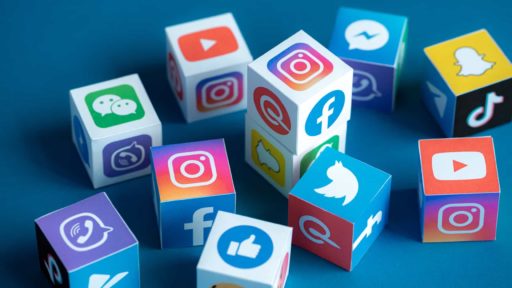When you think of brilliant content marketing examples, what springs to mind?
These days, businesses know they have to create content if they want to be successful. Blog posts are an obvious, easy first choice.
Long-form content is still super effective. But what about visuals? Social media campaigns? Podcasts and webinars?
It’s recommended for SEO (Search Engine Optimization) to have a mix. But how do you do it all well?
We’ve picked 12 of our favorite content marketing examples that show you how.
- Robinhood Snacks – Email marketing done right
- Tasty – The power of mobile-first videos
- Il Makiage – Interactive content works
- Charmin – Hashtags still rule social media
- TED Talks – Video and podcast marketing legends
- Buffer’s Open Culture Blog – Honest internal case studies
- Spotify Wrapped – A data-driven in-app experience
- Dollar Shave Club – Big spend doesn’t always equal big results
- GoPro – Making the most of their user-generated content
- Canva Design School – Walkthrough tutorials and videos
- Pepsi – A video series that entertains instead of selling
- HubSpot Academy – Free, high-value online training
1. Robinhood Snacks – Email marketing done right
There are few things more confusing than the stock market appears.
How anyone can make sense of the jumble of numbers and letters is a mystery to many. Let alone make money from them!
With the Robinhood Snacks email newsletter, you can be in that minority.
The best content marketers make people ‘get’ complicated topics. It’s all in the simple language, tone, and structure.

Source: Robinhood Snacks
It’s a 3-minute daily email with a “fresh take on the financial news”.
Marketers, it’s the perfect example of making your industry universally understood.
So, how do you master that? Well, there’s a simple trick that can help you to learn copywriting.
But that’s a whole other blog.
In the meantime, why not try adding an email newsletter into your content marketing strategy?
It doesn’t have to be daily or even weekly. Find out what you could turn into a monthly thing. It could be company updates or curated content you’ve enjoyed.
2. Tasty – The power of mobile-first videos
We all know how important video content is in digital marketing.
BuzzFeed created the YouTube channel ‘Tasty’ as a way of testing its distributed content strategy.
The channel started life on Facebook, as BuzzFeed tried out high-quality mobile-first videos. They jumped on the bandwagon at the perfect time because their how-to cooking tutorials quickly went viral.
It started with 60-second snack-sized videos, like the above. Then, once they’d built their user base, they moved onto longer-duration videos.
Since then, it’s become a stand-alone star. Tasty is one of the best examples of using content marketing to build strong brand awareness.

Source: BuzzFeed
Through constant experimenting, they’ve been able to sustain their growth and engagement since they started.
Their videos are fun to watch, brilliantly filmed, and are simply great content marketing.
If there’s only one lesson you can take from them, remember ABE. Always Be Experimenting.
3. Il Makiage – Interactive content works
If you have an Instagram account and follow anything makeup-related, you’ll probably have seen these sponsored ads.
They all include an influencer putting on foundation, talking about how they were “sooo skeptical about being shade matched online but…oh my gosh this color match is seriously insane”.
It’s a content marketing campaign that’s everywhere on the platform. And what a clever idea it is.
The ‘Il Makiage PowerMatch Quiz’ claims to find your perfect foundation color in 90 seconds.
You’re taken through a series of multiple-choice questions, then shown images of different skin colors.

Source: Il Makiage
As they have 50 shades, it gets pretty specific.
At the end, you’re asked for your email to be sent your product match. It also states your results will be available on the next page once you do.
Again, the tone of the copy throughout is really casual – using short sentences and simple language.
The whole process is:
- Fast
- Interactive
- Pretty accurate (appears to be)
- A clever way of getting mailing list subscribers
You may not have considered a quiz or any other kind of interactive content up until now. But this content marketing example proves it can be super effective.
4. Charmin – Hashtags still rule social media
Toilet paper isn’t the sort of product you’d usually associate with an engaged social community. But Charmin isn’t your average brand.
Their cheeky tweets (pun intended) earned them the title of ‘Sassiest Brand on Twitter’ from Time Magazine a few years ago.
None more cheeky than their hashtag #TweetFromTheSeat, which is still going nearly 10 years later.
Followers (or anyone for that matter) can join in the joke – and they do! As everyone on the planet needs to go #2, their target audience is pretty much anyone.
They’ve chosen a social media marketing brand voice that involves playful interaction with other brands and customers:
“We stay true to the brand’s playful instigator tone without crossing the line. Over time we’ve built a rapport with our community to understand where the boundaries are…Our cheeky voice helps and has won over negative commentators.”
Creating social media content with longevity isn’t easy. Neither is building a brand voice that appeals to so many.
The main takeaways? Research your audience and tailor your tone and social media engagement to them.
5. TED Talks – Video and podcast marketing legends
Other than video, there aren’t many pieces of content more engaging than podcast episodes.
TED is a nonprofit devoted to spreading ideas. Their video content marketing is what put them on the map.
Most of you will have heard of TED Talks. These 10-20 minute viral video lectures from expert speakers and thought leaders aim to educate and inspire – and they do!
But back in 1984, they didn’t start life in this format. The first TED conference didn’t go so well, but the reboot (6 years later) was a hit.
As the conferences were invite-only, tickets were like gold dust. But after the birth of YouTube, they chose to post some of their talks on the platform. “The rest is viral video history”.
After several years, TED Talks Daily was created – the purely audio versions. There’s now a new podcast episode released every weekday.
This addition has expanded the reach of their content to a wider audience by making it more accessible.
TED pivoted from its exclusive format and moved with the technological times.
Their video lectures are one of the best content marketing examples of all time. They’re a global household name because of a simple idea.
6. Buffer’s Open Culture Blog – Honest internal case studies
If there’s something that today’s consumers can spot a mile away, it’s being fake.
With that in mind, Buffer’s marketing team decided to combat this head-on with their ‘Open Culture’ blog.
It’s an honest insight into what they’re doing well and what they’re working to improve.
This includes blogging about things like:
- User experience
- Employee surveys and feedback
- Salaries
- Shareholder reports
- Hires and promotions

Source: Buffer
For customers, it makes the business feel trustworthy. For business owners, it’s a great insight into a majorly successful company.
There’s a ton of valuable information in every post. You can also see how their latest company experiments progress in real-time. E.g. their 4-day work week.
As MarTech put it,
“They show you not only what they do, but how you can do it, too — giving you incredible value with each and every post.”
Could you be a little more transparent with your content marketing efforts?
As well as inspiring ongoing original content, you could even see a boost in organic traffic like Buffer did.
People relate to honesty and the human element behind the business.
7. Spotify Wrapped – A data-driven in-app experience
We all think we have awesome music taste. Spotify Wrapped lets us prove it.
At the end of every year, Spotify ‘wraps up’ your most-listened-to music and podcasts. It’s a personalized, in-app story that’s totally unique to you.
This visual, interactive roundup covers things like:
- Total time spent listening
- Most-played artists and songs
- Favorite genres
- Top podcasts
- New artists you’ve discovered

Source: Spotify
As it’s displayed as a social media story, it’s easily shareable.
Depending on what you listened to that year, you may or may not want to utilize this.
It’s colorful, simply formatted, and broken down into bite-sized chunks. This means you can share the bits with the highest ‘cool factor’ and leave out the guilty pleasures.
What other content marketing examples do you know of that users look forward to every year? Especially when there are always new features being added.
It’s a genius use of internal data that makes you want to use the app even more (even if it’s just to overtake your One Direction replays).
Do you have customer metrics you could make your users want to share? Have a think.
8. Dollar Shave Club – Big spend doesn’t always equal big results
Valuable content doesn’t have to mean spending big bucks. Dollar Shave Club proved it.
Back in 2012, their legendary low-budget ad went crazy viral in 3 days.
It may not have had a ton of money behind it, but it had a ton of humor. It’s low-key, entertaining, and appeals to your everyday guy and gal.
It’s now easily taken its place as one of the best examples of content marketing for a startup. Ever.
But of course, you have to have a solid business to back up your high-quality content.
So, what made this startup so successful?
A few reasons:
- They had an affordable solution to a relatable issue
- They knew their customer pain points (expensive razors)
- As shaving is so common, their potential customer base is huge
- They created a unique customer experience
You don’t have to spend a lot to gain a lot, but you do have to back up what you’re offering.
One thing the small business didn’t plan on?
A couple of hours after they posted it, the crazy number of visitors to their site crashed their servers for 24 hours. Fame and success were almost over real fast.
Make sure you prepare for greatness. Don’t make the same mistake.
Most importantly, work out how you can entertain or inspire your audience. This is a content marketing example that will always be remembered.
9. GoPro – Making the most of their user-generated content
It’s no secret that GoPro cameras produce the types of content we all want to see. They’re selling sports action cameras, so you know the footage is gonna be good.
Aside from extreme sports, a huge variety of people now buy and use them for things like:
- Shark diving
- Traveling the world
- Fireworks displays
- Hiking
- Extreme weather-watching

Source: GoPro
Because of this, it’s no surprise their blog mostly focuses on their customers’ adventures. It would be silly not to use the huge bank of UGC (user-generated content).
There are plenty of benefits of user-generated content you can apply to your business:
- Users create unique content for your brand
- You save time as you don’t have to make it yourself
- It shows that people trust your brand
- Your products are exposed to new audiences each time
- It’s ‘social proof’ for potential customers that are thinking about buying
Here’s all about social proof, courtesy of Hootsuite.

Source: GoPro
Does your business already have user-generated content you aren’t using? Is there a way you could motivate customers to send some in?
High-quality UGC could be a welcome, regular addition to your content calendar.
10. Canva Design School – Walkthrough tutorials and videos
Canva is one of the most popular platforms for creating visual content.
For branding and marketing, this can include:
- Logos
- Infographics
- Social media posts and stories
- Presentations
- Posters and flyers
- Even videos!
It’s a great platform, but there’s a lot to learn.
Yes, you could figure it out for yourself in time, but why not speed up the process? Canva’s Design School does just that.

Source: Canva
It’s a simple concept, but they’ve nailed it. They get that if users know how to use their platform properly, they’ll want to use it more.
These easy-to-follow videos and interactive tutorials walk you through specific actions on Canva.
As you’re going through each stage of the tutorial, you’re learning by doing. Videos are great, but this format is so handy for kinesthetic learners.
From creating a pie chart to choosing the right font for your brand – it’s a high-value content marketing example that’ll make you a Canva pro in no time.
11. Pepsi – A video series that entertains instead of selling
Unlike the TED Talks experts, Uncle Drew (sadly) isn’t a real person.
So, who is he?
Well, he’s a senior basketball player who’s been smack-talking and dunking on “young bloods” ever since Pepsi created him in 2012.
Though Pepsi commissioned it, Uncle Drew came from the mind and body of young pro basketball player Kyrie Irving.
It’s no secret that today’s consumers hate direct advertising. Heck, it’s why content marketing was started in the first place.
Like Coca-Cola’s ‘Share a Coke’ campaign, Pepsi wanted to create “a more personal relationship with consumers and inspire shared moments of happiness”.
Lou Arbetter (Pepsi MAX’s brand manager at the time) said, “People’s B.S. detectors are so attuned now…Nobody wants to be marketed to.”
Aside from some sneaky product placement throughout, the only obvious advertising is in the final scenes.
Yes, Pepsi had far more of a budget than Dollar Shave Club when making their ad. But it was a genius campaign for them, ending with the tagline, “a zero-calorie cola in disguise.”
As Hollywood Insider summarised:
“That was what made the campaign so successful: they were less-so ads and more-so short films. Other than the intersected shots on the fans drinking Pepsi Max, the commercials did not feel like commercials because PepsiCo was not pushing a product to the consumer.”
The lesson?
Whether you’re in eCommerce or selling a service, don’t focus on the ‘sell’. Prioritize inspiring, educating, or entertaining with your own content – sales will come.
12. HubSpot Academy – Free, high-value online training
HubSpot Academy is the go-to for learning new business skills, from quick beginner’s guides and courses to full certifications. It’s almost like having a marketing agency in product form.
What’s more – it’s all free!
Whether you want to learn about marketing, sales, or service – there are hundreds of courses to choose from.
Their main landing page is clear and easy to navigate. The value is immediately obvious.

Source: HubSpot
It opens with a table of contents of popular courses for inspiration.
Courses offered include:
- LinkedIn Marketing for Business
- Taking Your Business Online With HubSpot
- Inbound Sales
- Website Optimization
- Customer Journey Mapping
HubSpot’s blog is already a content marketing powerhouse. The Academy is a level-up.
As explained on the site, you can:
“Grow your career and your business by completing free certifications and adding industry-recognized badges to your LinkedIn profile.”
HubSpot is obviously a huge name in the industry, but they’ve grown to this level. Who’s to say you can’t too?
Yes, it takes more time to create courses or white papers; but the payout can be huge.
Ask yourself – what content can you create that is more valuable than anything you’ve done before?
Conclusion
We tried to pick a variety of content marketing examples for this blog. As you might have noticed, though, there’s quite a lot of overlap in what makes them so good.
Although the formats are different, a few things keep popping up:
- Conversational copywriting
- Making the boring/complicated fun and easy to understand
- The importance of visuals
- The use of humor and lightheartedness
- Indirect advertising
Basically, whatever kind of content you’re creating, you want to make it relatable. That’s the main takeaway.
Which was your favorite content marketing example from the list? Are there any you think we need to see?





